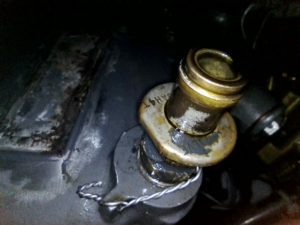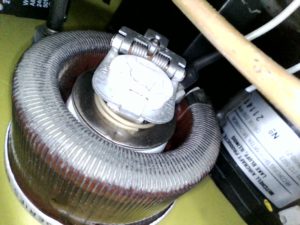I bought a borescope to monitor my engine but found there were a ton of other uses. I’m a big fan of aviation podcasts and one of my favorites is Pilots Discretion with John Zimmerman and he did a great interview with Mike Busch. He has some great books and writings, and I’d recommend starting with his book Manifesto: A Revolutionary Approach to General Aviation Maintenance. It’s his first of many books you should read as an aircraft owner.
While there is a lot of great information the short of his philosophy is that maintenance itself is a root cause of many aviation failures, and is something he backs with research. He argues that maintenance based on condition is superior and safer than preventative maintenance. For engines specifically he says that borescopy, oil analysis, and engine monitor data analysis are the best tools we have to monitor engine condition and make informed maintenance decisions.
I agree. So, I purchased a borescope for the next time I perform change and check the spark plugs.
I ended up with the above version after much research for a few reasons:
- I wanted something wireless without a screen – I wanted to use the large display on my phone or iPad and to easily snap photos or take videos to share with the experts when I had questions
- I wanted good quality images – this has a dimmable light and a 5MP camera so it was much better than many of the other generic ones
- I wanted something affordable – and this one wasn’t very expensive
- I wanted privacy – this has an app that is required to interface with the device, *however* signing up for one of their accounts is optional. Just click “skip” and start using the camera
I’ll update once I actually get to use this on the engine. But as soon as I received it I realized there were a bunch of other uses I had for it that would have made my life easier. I took these pictures and video with the app so you can see the quality, click for the full size images.
The first time I changed my oil I missed the quick drain valve with the hose and it stayed open, pouring oil all over the engine compartment and floor. I’m now paranoid after an oil change that the valve is not fully closed and I’ll be leaking oil. It’s difficult to see from the cowl door, but I get a clear view with the borescope.
The alternator and belt are tucked behind the nose bowl on the Grumman and is really hard to inspect. And removing the nose bowl itself requires removing the propeller unless you have a split nose bowl. Now I can inspect the alternator and belt quite easily.
When I purchased my Tiger one of the first flights I took was at night. I love the red panel lights — easy on the eyes and the red glow is really cool. However, spinning the knob on the old rheostat caused a big flicker. I was upside down under the panel trying to inspect it and used WD-40 Electrical Contact Cleaner to improve the connection, which worked really well to fix the flickering. But ouch on my back! So I used the borescope to get a much better inspection of the part.
This is a video I recorded using the borescope. The uplaod to YouTube changed the quality some, but I think you’ll get an idea — I also realized after taking this that I didn’t have the light turned all the way up so it’s a bit dimmer than it needs to be. This is the linkage between for the flap that opens and closes the left side fresh air vent. One of my early flights was in negative temperatures and I felt some cold air in the cabin. I was wondering if the vent was failing to close but really couldn’t get a good look at it. So, I used the borescope to verify that everything is connected and moving freely. Wisconsin just gets cold in the winter!



